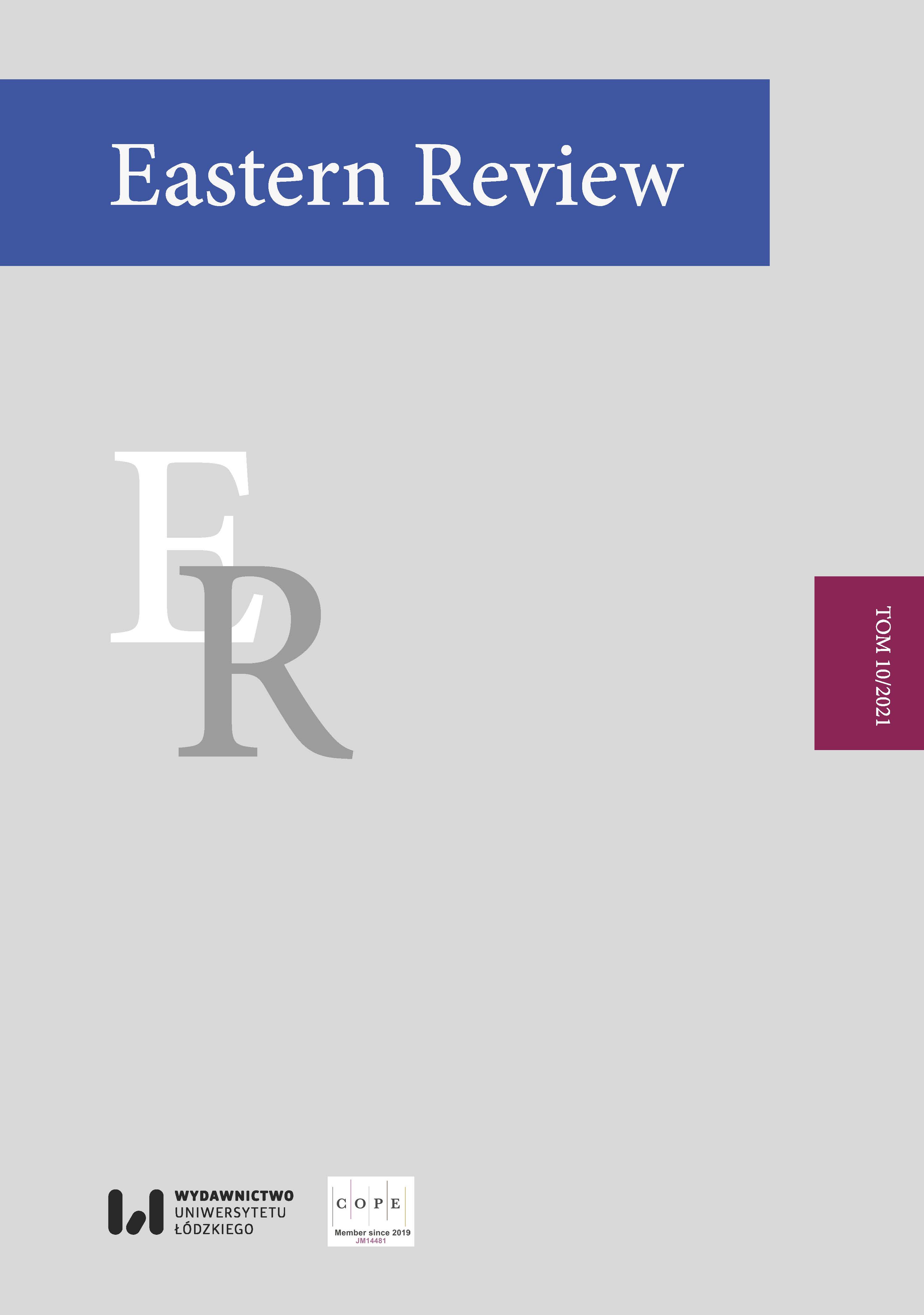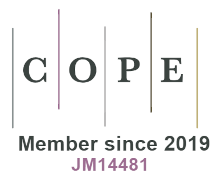Consequences of changing the electoral system for the model of political competition – The case of the 2018 elections to municipal councils in Łódź Voivodeship
DOI:
https://doi.org/10.18778/1427-9657.10.05Słowa kluczowe:
electoral system, Łódź Voivodeship, municipal councils, proportionality of elections, electoral formulaAbstrakt
The article is an attempt to assess the effects of the 2018 reform of local electoral law on a medium scale. The main goal is to investigate the consequences of these changes for the model of political rivalry. Through the use of a selection of quantitative methods, the authors verify hypotheses regarding the proportionality of local elections and the mechanical effect of the electoral system. The overall aim is to establish to what extent the new electoral system deforms the voting results when distributing seats among the electoral committees. Apart from the hypotheses, the authors also verify whether Łódź Voivodeship is a suitable case study and representative of national trends.
Bibliografia
Baldini, G., Pappalardo, A. 2009. Elections, electoral systems and volatile voters. Basingstoke: Palgrave Macmillan. https://doi.org/10.1057/9780230584389
Google Scholar
DOI: https://doi.org/10.1057/9780230584389
Bechtel, M. 2012. Not always second order: Subnational elections, national-level vote intentions, and volatility spillovers in a multi-level electoral system. Electoral Studies 31(1), pp. 170–183. https://doi.org/10.1016/j.electstud.2011.10.005
Google Scholar
DOI: https://doi.org/10.1016/j.electstud.2011.10.005
Benoit, K. 2000. Which electoral formula is the most proportional? A new look with new evidence. Political Analysis 8(4), pp. 381–388. https://doi.org/10.1093/oxfordjournals.pan.a029822
Google Scholar
DOI: https://doi.org/10.1093/oxfordjournals.pan.a029822
Benoit, K. 2007. Electoral Laws as Political Consequences: Explaining the Origins and Change of Electoral Institutions. Annual Review of Political Science 10, pp. 363–390. https://doi.org/10.1146/annurev.polisci.10.072805.101608
Google Scholar
DOI: https://doi.org/10.1146/annurev.polisci.10.072805.101608
Blais, A., Carty, R. 1991. The Psychological Impact of Electoral Laws: Measuring Duverger’s Elusive Factor. British Journal of Political Science 21(1), pp. 79–93. https://doi.org/10.1017/S0007123400006037
Google Scholar
DOI: https://doi.org/10.1017/S0007123400006037
Dahl, R.A., Tufte, E.R. 1973. Size and Democracy. Stanford: Stanford University Press.
Google Scholar
Denters, B., Goldsmith, M., Ladner, A., Mouritzen, P.A., Rose, L.E. 2014. Size and Local Democracy. Cheltenham, Northampton: Edward Elgar Publishing. https://doi.org/10.4337/9781783478248
Google Scholar
DOI: https://doi.org/10.4337/9781783478248
Duverger, M. 1951. Political Parties: Their Organization and Activity in the Modern State. New York: Wiley.
Google Scholar
Duverger, M. 1984. Which is the best electoral system? In: A. Lijphart, B. Grofman (eds.). Choosing an Electoral System: Issues and Alternatives, pp. 31–39. New York: Praeger.
Google Scholar
DuToit, S.H.C., Steyn, A.G.W., Stumpf, R.H. 2012. Graphical exploratory data analysis. New York: Springer.
Google Scholar
Flis, J., Stolicki, D. 2017. JOW-y w gminach: lokalne partie władzy a nowe reguły rywalizacji. Ruch Prawniczy, Ekonomiczny i Socjologiczny 3(79), pp. 253–266. https://doi.org/10.14746/rpeis.2017.79.3.20
Google Scholar
DOI: https://doi.org/10.14746/rpeis.2017.79.3.20
Gallagher, M. 1991. Proportionality, disproportionality, and electoral systems, Electoral Studies 10, pp. 33–51. https://doi.org/10.1016/0261-3794(91)90004-C
Google Scholar
DOI: https://doi.org/10.1016/0261-3794(91)90004-C
Gallagher, M. 2005. Ireland: the discreet charm of PR-STV. In: M. Gallagher, P. Mitchell (eds.), The Politics of Electoral Systems. Oxford: Oxford University Press, pp. 511–534. https://doi.org/10.1093/0199257566.003.0025
Google Scholar
DOI: https://doi.org/10.1093/0199257566.003.0025
Gendźwiłł, A., Żółtak, T. 2016. Skutki wprowadzenia okręgów jednomandatowych w wyborach lokalnych. Studia Regionalne i Lokalne 3(65), pp. 94–116. https://doi.org/10.7366/1509499536505
Google Scholar
Gendźwiłł, A., Żółtak, T. 2020. Ile partii w samorządzie? Partie sejmowe i listy lokalne w wyborach władz gmin w latach 2002–2018. Studia Regionalne i Lokalne 2(80), pp. 40–66. https://doi.org/10.7366/1509499528003
Google Scholar
Glinka, K. (2021). Polityczne konsekwencje zmiany formuły wyborczej i wprowadzenia ograniczeń w kandydowaniu – przypadek wyborów do rad dużych i średnich miast województwa dolnośląskiego z lat 2014 i 2018. Przegląd Prawa Konstytucyjnego 2(60), pp. 155–172. https://doi.org/10.15804/ppk.2021.02.10
Google Scholar
DOI: https://doi.org/10.15804/ppk.2021.02.10
Klonowski, M., Onasz, M. 2018. Wybrane zmiany w systemie wyborczym organów jednostek samorządu terytorialnego wynikające z ustawy o zmianie niektórych ustaw w celu zwiększenia udziału obywateli w procesie wybierania, funkcjonowania i kontrolowania niektórych organów publicznych – wstępna ocena. Studia Regionalne i Lokalne 2(72), pp. 99–117. https://doi.org/10.7366/1509499527206
Google Scholar
Klonowski, M., Onasz, M. 2021. Skutki zmian w systemie wyborczym organów jednostek samorządu terytorialnego wynikających z ustawy z 11 stycznia 2018 r. Athenaeum 69(1), pp. 147–170. https://doi.org/10.15804/athena.2021.69.09
Google Scholar
DOI: https://doi.org/10.15804/athena.2021.69.09
Laakso, M., Taagepera, R. 1979. ‘Effective’ Number of Parties: A Measure with Application to West Europe. Comparative Political Studies 12(1), pp. 2–27. https://doi.org/10.1177/001041407901200101
Google Scholar
DOI: https://doi.org/10.1177/001041407901200101
LeDuc, L., Niemi, R.G., Norris, P. (eds.). 1996. Comparing Democracies. Elections and Voting in a Global Perspective, Thousand Oaks: Sage.
Google Scholar
Lijphart, A. 1990. The political consequences of electoral laws, 1945–85. American Political Science Review 84(2), pp. 481–496. https://doi.org/10.2307/1963530
Google Scholar
DOI: https://doi.org/10.2307/1963530
Lijphart, A. 1994. Electoral systems and party systems: a study of twenty-seven democracies, 1945–1990. Oxford, New York: Oxford University Press. https://doi.org/10.1093/acprof:oso/9780198273479.001.0001
Google Scholar
DOI: https://doi.org/10.1093/acprof:oso/9780198273479.001.0001
Lijphart, A., Gibberd, R.W. 1977. Thresholds and payoffs in list systems of proportional representation. European Journal of Political Research 5(3), pp. 219–244. https://doi.org/10.1111/j.1475-6765.1977.tb01289.x
Google Scholar
DOI: https://doi.org/10.1111/j.1475-6765.1977.tb01289.x
Loosemore, J., Hanby, V.J. 1971. The Theoretical Limits of Maximum Distortion: Some Analytical Expressions for Electoral Systems. British Journal of Political Science 1, pp. 467–477. https://doi.org/10.1017/S000712340000925X
Google Scholar
DOI: https://doi.org/10.1017/S000712340000925X
Majcherkiewicz, T. 2018. Wybory regionalne jako wybory drugorzędne a perspektywa rządzenia wielopoziomowego. Przegląd Politologiczny 1, pp. 171–190. https://doi.org/10.14746/pp.2018.23.1.12
Google Scholar
DOI: https://doi.org/10.14746/pp.2018.23.1.12
McGhee, E. 2014. Measuring partisan bias in single-member district electoral systems. Legislative Studies Quarterly 39(1), pp. 55–85. https://doi.org/10.1111/lsq.12033
Google Scholar
DOI: https://doi.org/10.1111/lsq.12033
McGhee, E. 2017. Measuring efficiency in redistricting. Election Law Journal 16(4), pp. 417–442. https://doi.org/10.1089/elj.2017.0453
Google Scholar
DOI: https://doi.org/10.1089/elj.2017.0453
Michalak, B. 2018. Zmiana przepisów Kodeksu wyborczego przed wyborami samorządowymi 2018. Athenaeum 58, pp. 75–99. https://doi.org/10.15804/athena.2018.58.05
Google Scholar
DOI: https://doi.org/10.15804/athena.2018.58.05
Michalak, B. 2019. Ocena funkcjonalności zmian wprowadzonych do Kodeksu wyborczego w 2018 roku w świetle doświadczeń wyborów samorządowych. Studia Wyborcze 28, pp. 55–73. https://doi.org/10.26485/SW/2019/28/4
Google Scholar
DOI: https://doi.org/10.26485/SW/2019/28/4
Michalak, B. 2021. (Dys)proporcjonalność polskich wyborów samorządowych. Przegląd Prawa Konstytucyjnego 4 (62), pp. 273–285. https://doi.org/10.15804/ppk.2021.04.16
Google Scholar
DOI: https://doi.org/10.15804/ppk.2021.04.16
Neumann, J. 2020. Zmiana systemu z większościowego na proporcjonalny w gminach powyżej 20 tysięcy mieszkańców w województwie łódzkim jako czynnik oddziałujący na liczbę i charakter komitetów wyborczych. Studia Wyborcze 29, pp. 99–122. https://doi.org/10.26485/SW/2020/29/5
Google Scholar
DOI: https://doi.org/10.26485/SW/2020/29/5
Norris, P. 1996. Electoral Change since 1945. Oxford: Blackwell.
Google Scholar
Norris, P. 1997. Choosing Electoral Systems: Proportional, Majoritarian and Mixed Systems. International Political Science Review 18(3), pp. 297–312. https://doi.org/10.1177/019251297018003005
Google Scholar
DOI: https://doi.org/10.1177/019251297018003005
Oliver, J.E., Shang, E.H., Callen, Z. 2012. Local Elections and the Politics of Small-Scale Democracy. Princeton: Princeton University Press. https://doi.org/10.23943/princeton/9780691143552.001.0001
Google Scholar
DOI: https://doi.org/10.23943/princeton/9780691143552.001.0001
Pallarés, F., Keating, M. 2003. Multi-level election competition: regional elections and party systems in Spain. European Urban and Electoral Studies 10(3), pp. 239–255. https://doi.org/10.1177/09697764030103005
Google Scholar
DOI: https://doi.org/10.1177/09697764030103005
Rae, D. 1971. The Political Consequences of Electoral Laws. New Haven: Yale University Press.
Google Scholar
Rae, D.W. 1967. The political consequences of electoral laws. New Haven: Yale University Press.
Google Scholar
Rae, D.W., Hanby, V.J., Loosemore, J. 1971. Thresholds of representation and thresholds of exclusion. An analytic note on electoral systems. Comparative Political Studies 3(4), pp. 479–488. https://doi.org/10.1177/001041407100300406
Google Scholar
DOI: https://doi.org/10.1177/001041407100300406
Rakowska-Trela, A., 2018a. Nowelizacja samorządowego prawa wyborczego z 2018 r. Przegląd Prawa Konstytucyjnego 4(44), pp. 19–35. https://doi.org/10.15804/ppk.2018.04.02
Google Scholar
DOI: https://doi.org/10.15804/ppk.2018.04.02
Rakowska-Trela, A. 2018b. Zasada demokratycznego państwa prawnego a zmiany w prawie wyborczym. Studia Wyborcze 25, pp. 17–30. https://doi.org/10.26485/SW/2018/25/2
Google Scholar
Reif, K., Schmitt, H. 1980. Nine second-order national elections; a conceptual framework for the analyses of European election results. European Journal of Political Research 8(3), pp. 3–44. https://doi.org/10.1111/j.1475-6765.1980.tb00737.x
Google Scholar
DOI: https://doi.org/10.1111/j.1475-6765.1980.tb00737.x
Rokkan, S. 1968. Elections: electoral systems. In: D.L. Sills (ed.). International encyclopaedia of the social sciences. New York: Crowell-Collier-Macmillan, pp. 6–21.
Google Scholar
Rule, W., Zimmermann, J.F. 1992. United States Electoral Systems: Their Impact on Women and Minorities. New York: Praeger.
Google Scholar
Rulka, M. 2018. Na temat zgodności projektu ustawy o zmianie niektórych ustaw w celu zwiększenia udziału obywateli w procesie wybierania, funkcjonowania i kontrolowania niektórych organów publicznych (druk nr 2001) – w części zmieniającej przepisy kodeksu wyborczego — z europejskimi standardami wyborczymi. Przegląd Sejmowy 1(144), pp. 165–179.
Google Scholar
Schackel, A.H. 2014. How to analyze second-order election effects? A refined second-order election model. Comparative European Politics 13(6), pp. 636–655. https://doi.org/10.1057/cep.2014.16
Google Scholar
DOI: https://doi.org/10.1057/cep.2014.16
Schmitt, H., Teperoglou, E. 2017. The study of less important elections. In: K. Arzheimer, J. Evans, M.S. Lewis-Beck (eds.). The Sage handbook of electoral behaviour. Los Angeles: Sage Publishing, pp. 56–79. https://doi.org/10.4135/9781473957978.n4
Google Scholar
DOI: https://doi.org/10.4135/9781473957978.n4
Shugart, M.S., Taagepera, R. 2017a. Electoral system effects on party systems. In: E. Herron, R. Pekkanen, M.S. Shugart (eds.). Oxford handbook of electoral systems. New York: Oxford UP, pp. 41–68. https://doi.org/10.1093/oxfordhb/9780190258658.001.0001
Google Scholar
DOI: https://doi.org/10.1093/oxfordhb/9780190258658.013.15
Shugart, M.S., Taagepera, R. 2017b. Votes from seats: logical models of electoral systems. Cambridge, UK: Cambridge University Press. https://doi.org/10.1017/9781108261128
Google Scholar
DOI: https://doi.org/10.1017/9781108261128
Taagepera, R., Shugart, M.S. 1989. Seats and votes. The effects and determinants of electoral systems. New Haven: Yale University Press. https://doi.org/10.1016/0261-3794(89)90021-8
Google Scholar
DOI: https://doi.org/10.1016/0261-3794(89)90021-8
Urbaniak, K. 2018. Zasada proporcjonalności w samorządowym prawie wyborczym. Przegląd Prawa Konstytucyjnego 4(44), pp. 37–56. https://doi.org/10.15804/ppk.2018.04.03
Google Scholar
DOI: https://doi.org/10.15804/ppk.2018.04.03
Ustawa z dnia 5 stycznia 2011 r. – Kodeks wyborczy, Dz.U. 2011, nr 21, poz. 112 z późn. zm.
Google Scholar
Ustawa z dnia 11 stycznia 2018 r. o zmianie niektórych ustaw w celu zwiększenia udziału obywateli w procesie wybierania, funkcjonowania i kontrolowania niektórych organów publicznych, Dz.U. 2018, poz. 130.
Google Scholar
Pobrania
Opublikowane
Jak cytować
Numer
Dział
Licencja

Utwór dostępny jest na licencji Creative Commons Uznanie autorstwa – Użycie niekomercyjne – Bez utworów zależnych 4.0 Międzynarodowe.










